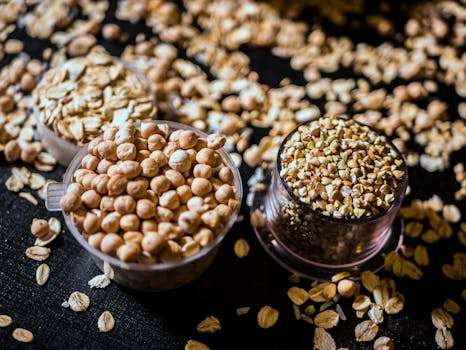The Fiber Frenzy: High-Fiber is changing to a Healthy trend.
Are you looking to improve your overall health and well-being? Perhaps you’re interested in making some changes to your diet in order to achieve your health goals. If so, then you may be familiar with the latest buzzword in the world of nutrition: fiber. Often associated with improving digestion and preventing constipation, fiber is an essential nutrient that has long been overlooked. However, with the rise of the health and wellness industry, high-fiber foods are now in the spotlight and are quickly becoming a healthy trend. In this article, we’ll take a closer look at the fiber frenzy and how incorporating high-fiber foods into your diet can bring about a positive change in your overall health.
The Importance of Fiber in Our Diet
Fiber is a type of carbohydrate that is found in plant-based foods such as vegetables, fruits, whole grains, and legumes. Unlike other carbs, fiber is not broken down and absorbed by the body, meaning it passes through our digestive system relatively intact. According to the Institute of Medicine, the recommended daily intake of fiber is 25 grams for women and 38 grams for men. However, studies show that most adults do not meet this daily requirement, with an average intake of only 15 grams per day.
The Benefits of a High-Fiber Diet
While fiber plays a crucial role in maintaining digestive regularity, its benefits go beyond that. Research has shown that a diet rich in fiber can help prevent chronic diseases such as diabetes, heart disease, and certain types of cancer. This is because fiber helps regulate blood sugar levels and lower cholesterol levels, which are risk factors for these diseases. Additionally, high-fiber foods tend to be more filling, which can aid with weight management and promote overall satiety.
Fiber: Soluble vs. Insoluble
When it comes to fiber, not all types are created equal. There are two main types of fiber: soluble and insoluble. Soluble fiber dissolves in water and forms a gel-like substance in the digestive tract, which helps lower cholesterol levels and improve blood sugar control. Insoluble fiber, on the other hand, does not dissolve in water and adds bulk to your stools, promoting regular bowel movements and preventing constipation.
The Fiber Frenzy: High-Fiber Foods to Incorporate into Your Diet
Now that we understand the importance and benefits of fiber, let’s take a closer look at some of the high-fiber foods that are taking the health and wellness industry by storm.
Fruits and Vegetables
Fruits and vegetables are not only high in fiber but also packed with essential vitamins, minerals, and antioxidants. To up your fiber intake, make sure to incorporate a variety of colorful produce such as spinach, broccoli, apples, berries, and pears. As an added bonus, these foods are also low in calories, making them a great choice for weight management.
Whole Grains
Whole grains are an excellent source of both soluble and insoluble fiber. They also provide a good amount of protein, making them a staple for vegetarians and vegans. Some examples of high-fiber whole grains include quinoa, oatmeal, brown rice, and whole-wheat pasta.
Legumes
Beans, lentils, and peas are all part of the legume family and are packed with fiber. They are also a good source of plant-based protein, making them a great option for those looking to reduce their meat intake. To add some variety, try incorporating different types of legumes into your diet, such as black beans, chickpeas, and split peas.
Incorporating High-Fiber Foods into Your Diet
Now that you know the benefits and sources of high-fiber foods, the next question is, how can you incorporate them into your diet? Here are a few tips to help you get started:
Start Slowly
If your current diet is low in fiber, it’s essential to increase your intake gradually to avoid digestive discomfort. Aim to add one high-fiber food at a time and increase your intake slowly to allow your body to adjust.
Include Fiber with Every Meal
To meet your daily fiber intake, make sure to include high-fiber foods with every meal and snack. For example, you can add berries to your oatmeal at breakfast, have a side of steamed broccoli with your lunch, and snack on carrots and hummus in the afternoon.
Get Creative with Cooking
There are plenty of ways to incorporate high-fiber foods into your meals. For example, try adding chickpeas to your salad, use whole-wheat flour in your baking, and swap white rice with quinoa.
The Bottom Line
The fiber frenzy is here to stay, and for good reason. By incorporating high-fiber foods into your diet, you can not only improve your digestion but also reduce your risk of chronic diseases and promote overall health and wellness. So, hop on the fiber bandwagon and start reaping the benefits today!











